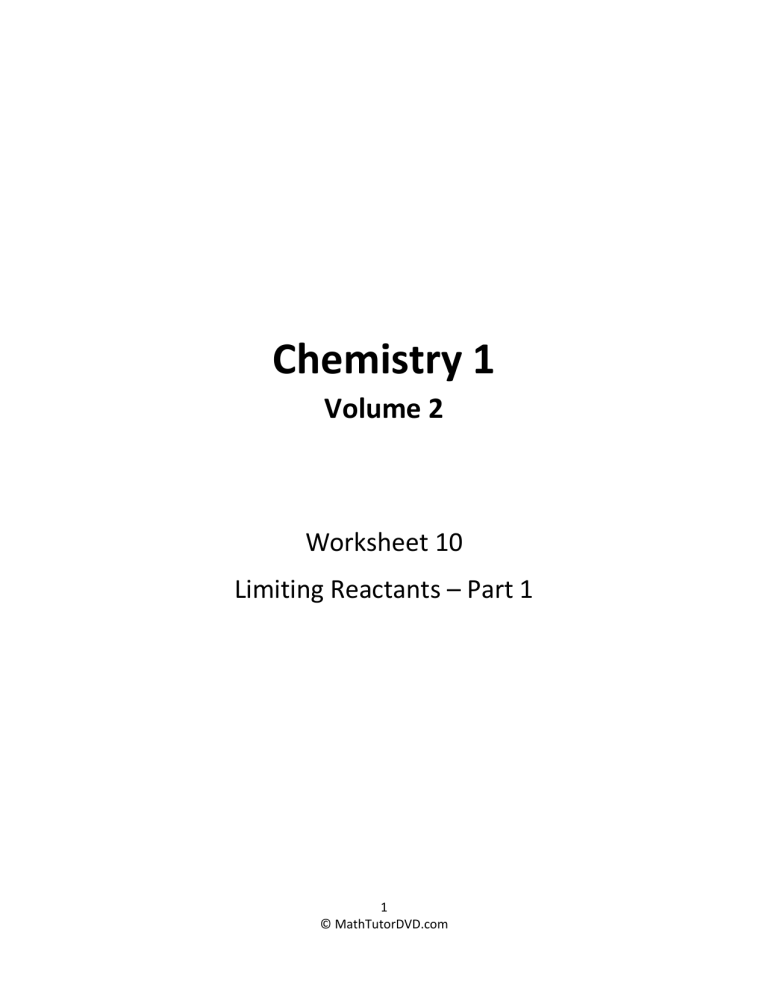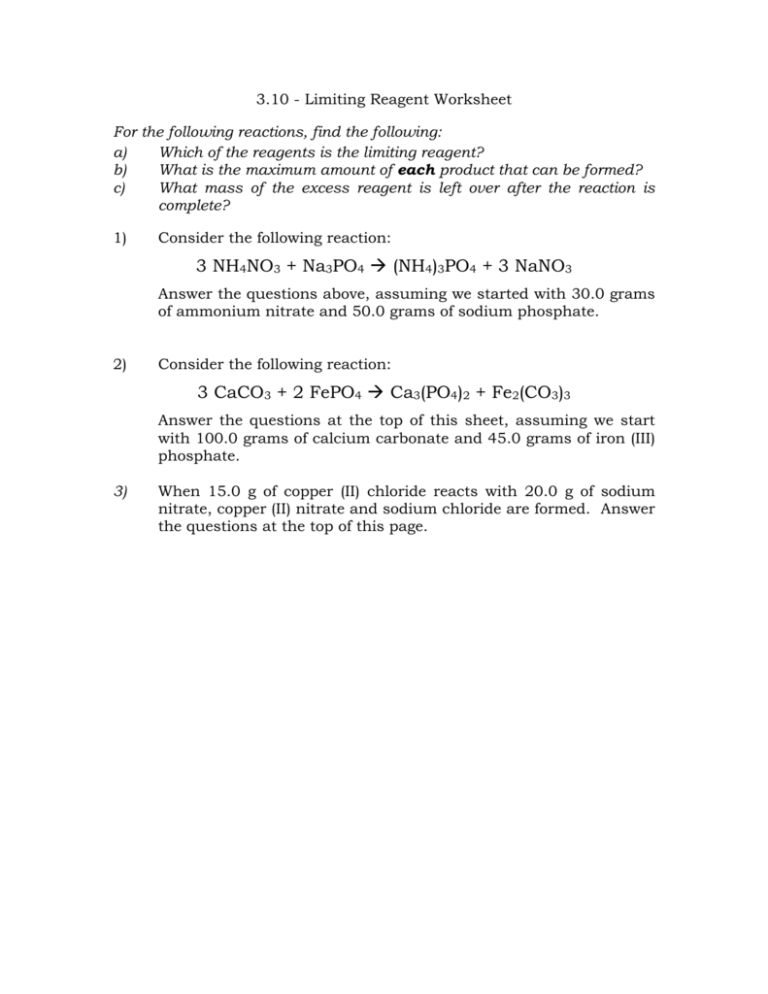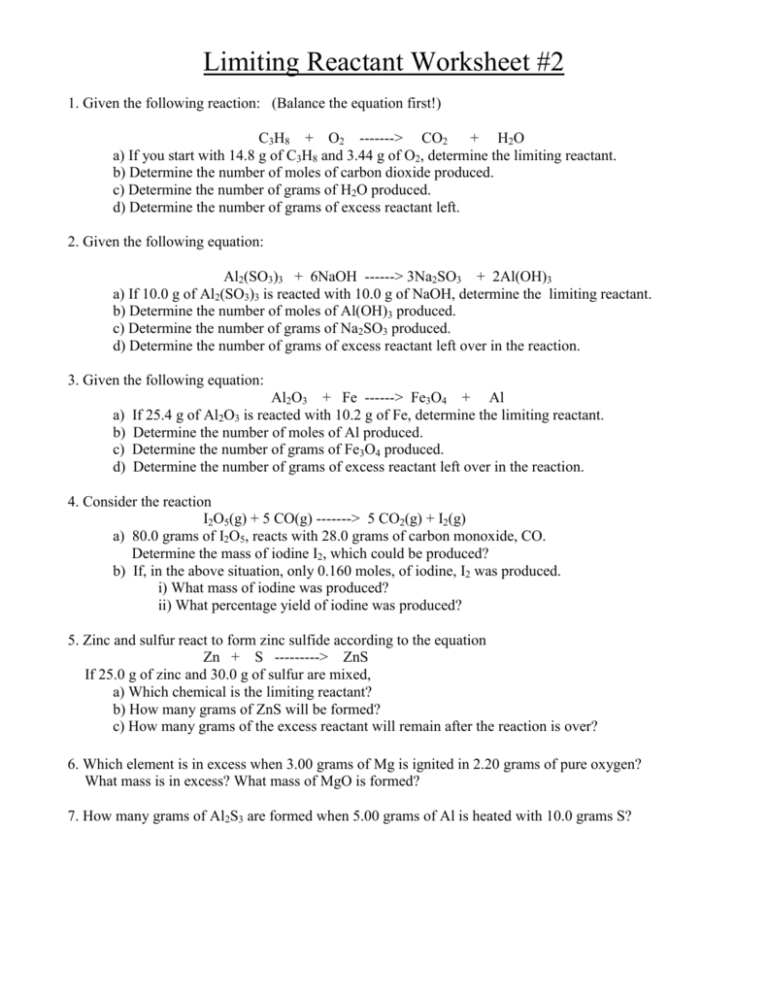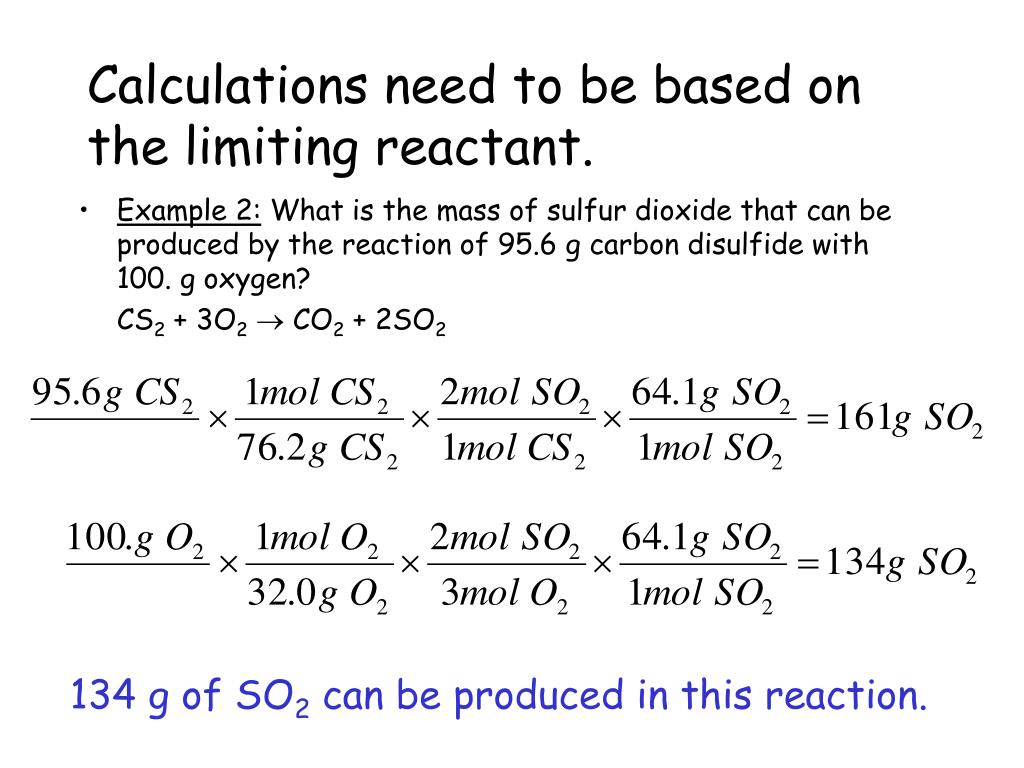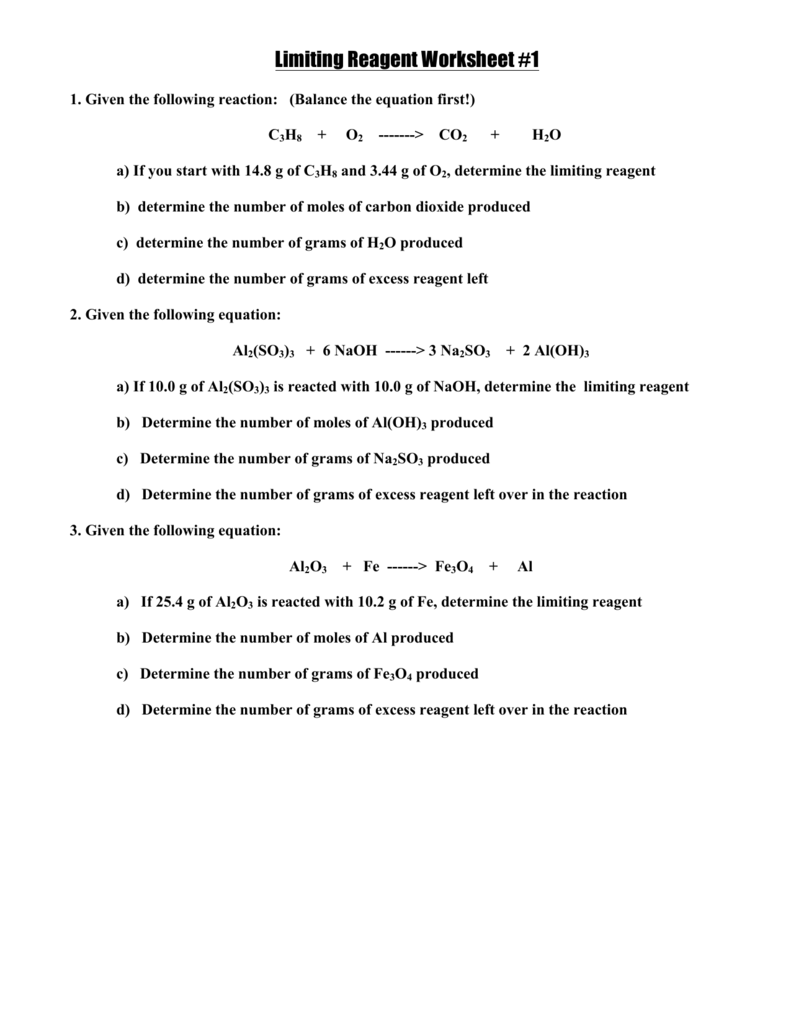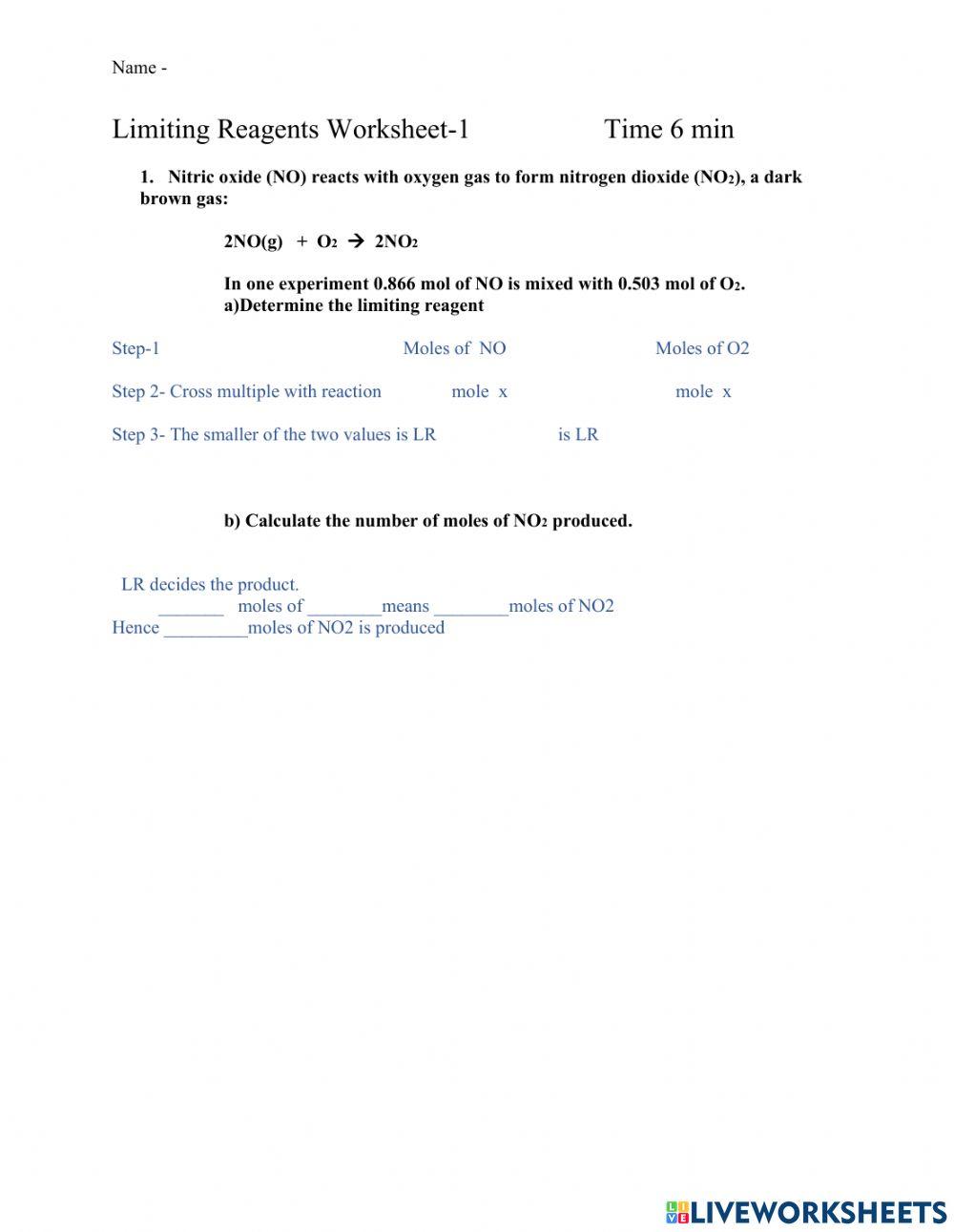Limiting Reactant Worksheet 1 - Because sodium iodide is the reagent that causes 8.51 grams of sodium. How many moles of nh3 can be produced from the reaction of 28 g of n2 ? Limiting reactant stoichiometry problems #1 1. Determine the number of moles of al produced. What is the limiting reagent in the reaction described in problem 2? (b) how many moles of carbon dioxide gas (co2) will form? (a) identify the limiting reactant. A student places 2.36 moles of acetic acid. What mass of calcium hydroxide is formed when 15.0 g of calcium oxide reacts with 12.0 g of water? Mgso 4 + bacl 2 baso 4 + mgcl 2 what is the maximum.
(b) how many moles of carbon dioxide gas (co2) will form? Consider the following chemical reaction. A student places 2.36 moles of acetic acid. How many moles of nh3 can be produced from the reaction of 28 g of n2 ? Determine the number of moles of al produced. Mgso 4 + bacl 2 baso 4 + mgcl 2 what is the maximum. If 25.4 g of al2o3 is reacted with 10.2 g of fe, determine the limiting reagent. What is the limiting reagent in the reaction described in problem 2? What mass of calcium hydroxide is formed when 15.0 g of calcium oxide reacts with 12.0 g of water? Limiting reactant stoichiometry problems #1 1.
Limiting reactant stoichiometry problems #1 1. A student places 2.36 moles of acetic acid. (b) how many moles of carbon dioxide gas (co2) will form? Determine the number of moles of al produced. Because sodium iodide is the reagent that causes 8.51 grams of sodium. How many moles of nh3 can be produced from the reaction of 28 g of n2 ? Consider the following chemical reaction. What is the limiting reagent in the reaction described in problem 2? What mass of calcium hydroxide is formed when 15.0 g of calcium oxide reacts with 12.0 g of water? (a) identify the limiting reactant.
Limiting Reagent Worksheet 1
Determine the number of moles of al produced. What is the limiting reagent in the reaction described in problem 2? Mgso 4 + bacl 2 baso 4 + mgcl 2 what is the maximum. (a) identify the limiting reactant. Because sodium iodide is the reagent that causes 8.51 grams of sodium.
Limiting Reactants Worksheet Chemistry 1
Because sodium iodide is the reagent that causes 8.51 grams of sodium. Consider the following chemical reaction. What is the limiting reagent in the reaction described in problem 2? (b) how many moles of carbon dioxide gas (co2) will form? Limiting reactant stoichiometry problems #1 1.
Free PrintableLimiting Reactant Worksheets for Students
(a) identify the limiting reactant. What mass of calcium hydroxide is formed when 15.0 g of calcium oxide reacts with 12.0 g of water? Because sodium iodide is the reagent that causes 8.51 grams of sodium. (b) how many moles of carbon dioxide gas (co2) will form? Mgso 4 + bacl 2 baso 4 + mgcl 2 what is the.
Limiting Reagent Worksheet
Because sodium iodide is the reagent that causes 8.51 grams of sodium. Consider the following chemical reaction. A student places 2.36 moles of acetic acid. What is the limiting reagent in the reaction described in problem 2? How many moles of nh3 can be produced from the reaction of 28 g of n2 ?
Limiting Reagent Worksheets 1 Answers
What is the limiting reagent in the reaction described in problem 2? (b) how many moles of carbon dioxide gas (co2) will form? (a) identify the limiting reactant. Mgso 4 + bacl 2 baso 4 + mgcl 2 what is the maximum. Consider the following chemical reaction.
Limiting Reactants Examples With Answers
(a) identify the limiting reactant. If 25.4 g of al2o3 is reacted with 10.2 g of fe, determine the limiting reagent. Mgso 4 + bacl 2 baso 4 + mgcl 2 what is the maximum. What is the limiting reagent in the reaction described in problem 2? What mass of calcium hydroxide is formed when 15.0 g of calcium oxide.
Limiting And Excess Reactant Worksheet
What mass of calcium hydroxide is formed when 15.0 g of calcium oxide reacts with 12.0 g of water? Consider the following chemical reaction. Limiting reactant stoichiometry problems #1 1. Mgso 4 + bacl 2 baso 4 + mgcl 2 what is the maximum. Determine the number of moles of al produced.
Limiting Reagent WS 1 worksheet Live Worksheets
(b) how many moles of carbon dioxide gas (co2) will form? How many moles of nh3 can be produced from the reaction of 28 g of n2 ? What is the limiting reagent in the reaction described in problem 2? A student places 2.36 moles of acetic acid. (a) identify the limiting reactant.
Limiting Reactant Worksheets 1
Consider the following chemical reaction. Mgso 4 + bacl 2 baso 4 + mgcl 2 what is the maximum. Limiting reactant stoichiometry problems #1 1. (a) identify the limiting reactant. A student places 2.36 moles of acetic acid.
(A) Identify The Limiting Reactant.
(b) how many moles of carbon dioxide gas (co2) will form? Limiting reactant stoichiometry problems #1 1. How many moles of nh3 can be produced from the reaction of 28 g of n2 ? If 25.4 g of al2o3 is reacted with 10.2 g of fe, determine the limiting reagent.
Mgso 4 + Bacl 2 Baso 4 + Mgcl 2 What Is The Maximum.
Determine the number of moles of al produced. A student places 2.36 moles of acetic acid. What is the limiting reagent in the reaction described in problem 2? Because sodium iodide is the reagent that causes 8.51 grams of sodium.
Consider The Following Chemical Reaction.
What mass of calcium hydroxide is formed when 15.0 g of calcium oxide reacts with 12.0 g of water?

